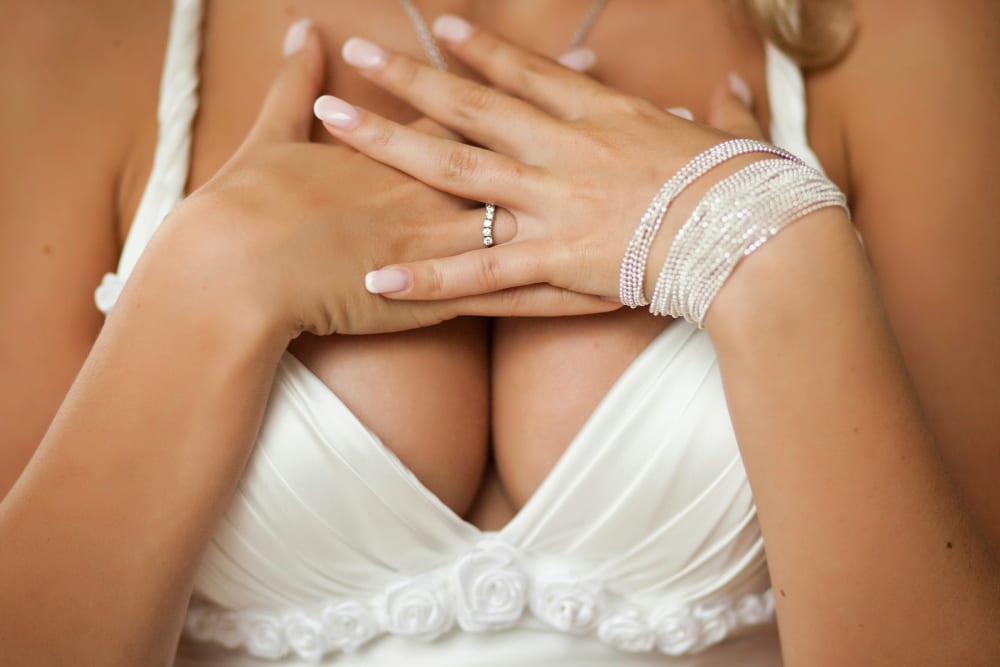If you’ve started doing your breast implant research before your big day, you’ve probably seen a few strange-sounding terms used to describe various aspects of breast enhancement.
To get you up to speed on some of the most commonly used breast augmentation terminology, here are six words to know.
-
Unders and Overs
During your consultation with your cosmetic surgeon, you’ll soon find that there are a number of different breast implant options to choose from. One decision you’ll have to make is where your implants will be located.
“Unders” refers to breast implants that are placed under your chest muscle and your breast tissue. This type is also called submuscular implants and is a good choice for women with small amounts of natural breast tissue.
“Overs,” or subglandular implants, are placed over your chest muscle but under your breast tissue. Very athletic women often choose subglandular placement because this approach does not interfere with your muscle.
-
Gummy Bear
Gummy bear implants offer a combination of the benefits of traditional silicone and saline implants.Gummy bear implants are another breast augmentation option you can discuss with your cosmetic surgeon. These contain a highly cohesive silicone gel that allows them to retain their shape even more so than traditional silicone implants.
One of the biggest benefits of gummy bear implants is that they minimize the risk of leakage in the unlikely event of a rupture. With regular silicone implants, in the event of a rupture, silicone gel may escape into the breast pocket. Although this isn’t necessarily a health risk, it can complicate the revision process.
Saline implants, on the other hand, contain a sterile saltwater solution, so if a rupture were to happen, you would see a deflating effect in your breasts.
-
Drop and Fluff
You might have heard that breast implants “drop and fluff.” This term refers to the healing process following your breast augmentation, as some swelling can cause your implants to appear too high on your chest wall. As swelling diminishes over the next several weeks, your breasts will settle into place by dropping to a more natural-looking position and softening or “fluffing.”
-
Bottoming Out
Breasts that “bottom out” appear to be sliding down your chest. This can sometimes happen when the breast pocket is unable to support the weight of larger implants. If you think your breasts may be bottoming out, consult your cosmetic surgeon. They’ll likely suggest revision surgery to correct this.
-
Capsular Contracture
Capsular contracture occurs when the surrounding tissue tightens and hardens, placing pressure on your implants. Mild cases may not present any symptoms, whereas more severe cases can cause pain and abnormal-looking results.
If you experience capsular contracture, then depending on the severity of your case, your cosmetic surgeon may recommend breast revision surgery to correct the issue and restore your soft, natural-looking breasts.
-
Boob Greed
The term “boob greed” means you’re having second thoughts about your implant size and questioning if you should’ve gone larger for your breast augmentation.
The key to avoiding boob greed is twofold. First, be completely open and honest about your goals with your cosmetic surgeon right from the get-go. This will help them to custom-tailor your procedure so you achieve just what you’re looking for.
Secondly, it’s so important to have realistic expectations about your breast augmentation. Understand that the size of your implants should complement your natural body proportions. Otherwise, your results can appear unbalanced and unnatural. Work with your cosmetic surgeon to choose a size that highlights your best assets and enhances your natural shape.
Related Posts












